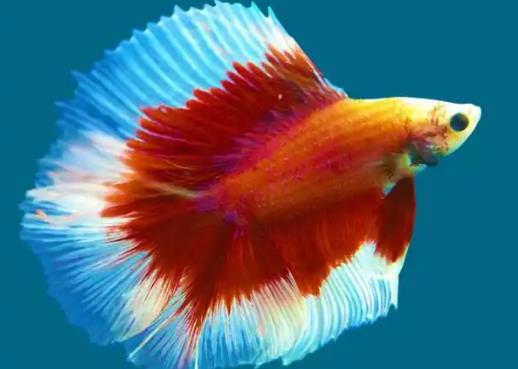If a betta fish has a swollen abdomen, it’s important to first determine whether it’s due to pathological ascites or a natural reproductive phenomenon (a female carrying eggs). Below is a detailed analysis and handling advice:

I. How to Distinguish Between Ascites and a Female Carrying Eggs?
Ascites (Pathological Condition)
Swelling Location: Concentrated in the front half of the body (near the gills). In severe cases, scales may protrude (pinecone disease).
Abnormal Behavior: Unbalanced swimming, floating at the surface or sinking to the bottom, loss of appetite, or refusal to eat entirely.
Abnormal Excretion: No for days; the anus may appear red and swollen.
Associated Symptoms: In later stages, symptoms like protruding eyes (popeye) and rapid breathing may occur.
Female Carrying Eggs (Normal Physiological Phenomenon)
Swelling Location: Concentrated in the rear abdomen (near the vent), with a rounded but soft feel.
Normal Behavior: Swims nimbly, maintains a healthy appetite, and has regular bowel movements.
Physical Traits: The abdominal skin is smooth with no abnormal scales. Some females develop "breeding stripes" (vertical stripes on the abdomen).
Changes in Vent: A small, slightly protruding white dot (eggs) may be visible.
II. Handling Plans for Different Situations
1. Ascites (Requires Urgent Intervention)
Causes: Deteriorating water quality, bacterial infections (e.g., enteritis), parasites, or internal organ damage.
Treatment Steps:
Isolate the Sick Fish: Keep it in a separate shallow tank (water depth ≤ 10cm) for quiet recovery.
Raise Temperature + Add Salt: Increase water temperature to 28–30°C and add coarse salt (concentration 0.3%–0.5%).
Medication:
Early stage: Stop feeding for 2 days; after water change, add methylene blue (follow product instructions for dosage).
Mid to late stage: Use antibiotics (e.g., oxytetracycline at 10mg/L for baths) or specialized fish medications.
Supportive Therapy: Feed food soaked in allicin to boost immunity.
2. Female Carrying Eggs (No Treatment Needed)
Natural Process: Wait for egg-laying to finish (about 1–2 weeks). Reduce feeding during this period to avoid pressing on the eggs.
Post-Care: If the eggs are unfertilized, the female will absorb them naturally, and her abdomen will gradually return to normal.
III. Preventive Measures
Water Quality Maintenance: Change 1/3 of the water weekly. Avoid high levels of ammonia or nitrites (use test kits to monitor).
Scientific Feeding: Feed once daily, with food consumed within 5 minutes to prevent leftover food from rotting.
Reduce Stress: Avoid frequent disturbances or sudden light changes to lower the risk of stress in bettas.
Note: If swelling is accompanied by protruding eyes + raised scales, it may be late-stage ascites, which has a low cure rate. Prepare accordingly.
